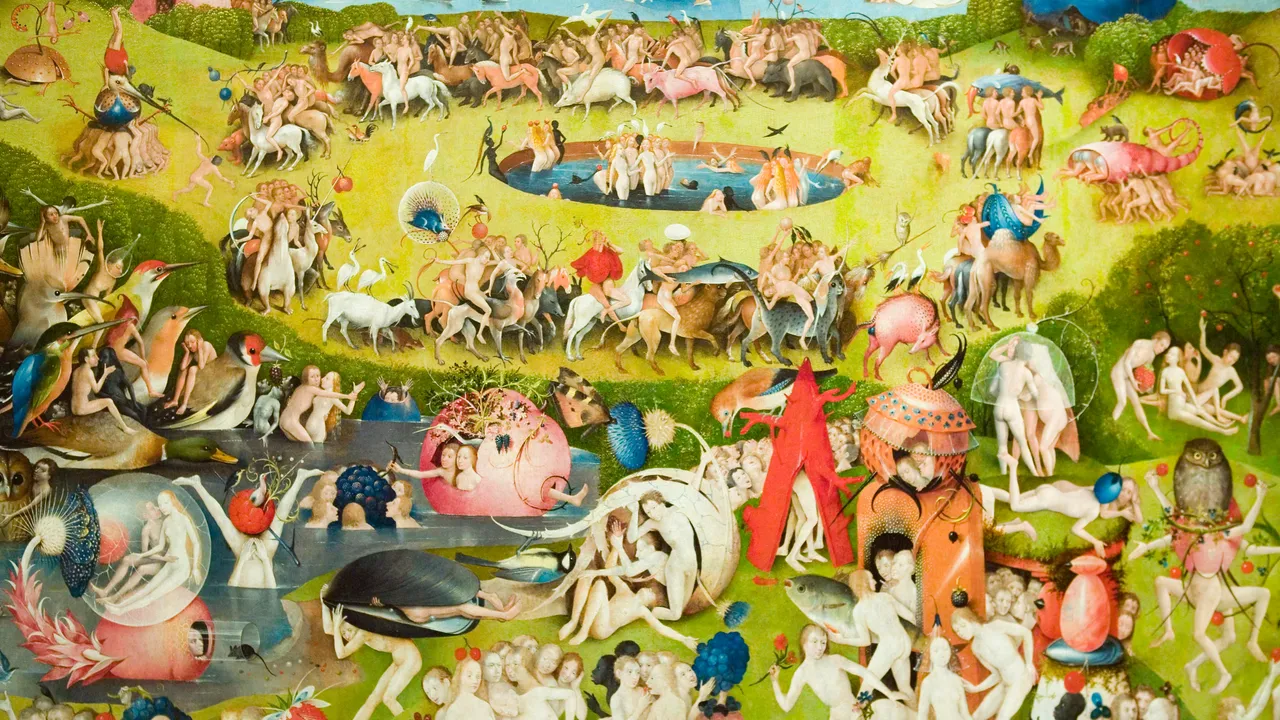
Robert Draws – The Garden of Earthly Delights, created by the Dutch artist Hieronymus Bosch, is a painting that captivates and baffles viewers across the world. Painted around 1490-1510, this triptych is one of the most intriguing and enigmatic pieces of art from the Northern Renaissance. The surreal imagery, complex symbolism, and extraordinary level of detail have made this masterpiece a subject of fascination for art historians, critics, and viewers alike. In this article, we explore the deep beauty and mystery of Bosch’s most famous work, examining its intricate details, the possible interpretations of its symbolism, and why it continues to spark interest today.
The Garden of Earthly Delights is a triptych with three distinct panels. The left panel depicts Eden, the central panel shows earthly pleasures, and the right panel illustrates hell. Bosch’s attention to detail and vivid colors make this painting extraordinary. The left panel portrays the creation of Eve, with God introducing her to Adam in a serene setting. This peaceful moment contrasts with the chaos in the other two panels.
The central panel is the most captivating. It depicts a paradise where humans, animals, and strange creatures engage in bizarre activities. The scene radiates freedom, indulgence, and surrealism. Strange combinations of animals and human figures suggest a dreamlike reality. Many interpret this panel as a depiction of human indulgence and sin.
The right panel presents a terrifying vision of hell. Demons torture sinners, and fire, suffering, and darkness fill the landscape. The nightmarish imagery contrasts with the indulgence in the central panel. Bosch likely intended to show the dangers of excess and vice through this dramatic juxtaposition.
The Garden of Earthly Delights is famous for its rich symbolism. Bosch filled the panels with diverse images. Scholars interpret these images in various ways over centuries. Many believe the painting addresses human temptation and indulgence. The central panel contrasts pleasure with biblical references to Eden and hell.
Some view the painting as a warning against sin and fleeting pleasures. Others see Bosch’s interest in alchemy and astrology. The surreal creatures and scenes may reflect themes of magic and superstition. Bosch likely explored the human psyche through these fantastical elements.
One puzzling feature is a giant bird-like creature in the central panel. Its significance remains unclear, but it may represent the soul’s flight. The bird might also symbolize human fragility or spiritual transformation. The strange creatures and hybrid animals add to the painting’s mystery. These bizarre figures continue to challenge interpretations and inspire analysis.
“Read about: The Thinker: A Deep Dive into Rodin’s Iconic Sculpture”
The Garden of Earthly Delights has influenced countless artists, writers, and filmmakers throughout history. Its surrealist imagery and vivid color palette have inspired modern and contemporary art movements, including Surrealism. Salvador Dalí, Max Ernst, and other 20th-century artists have cited Bosch as an influence on their work. The dreamlike and bizarre quality of the painting continues to resonate with viewers, providing them with a glimpse into the subconscious, the irrational, and the fantastical.
The painting also continues to inspire literary works and popular culture. Its themes of temptation, excess, and moral consequences resonate in modern discussions about human nature and morality. The mysterious and haunting nature of the painting ensures that it remains relevant in contemporary discourse, with new interpretations emerging even today.
“Read more: Building a Healthy Mind: Steps to Cultivate a Positive Mindset”
In a world filled with rapid technological advancement, digital art, and contemporary works, The Garden of Earthly Delights stands as a testament to the timeless nature of art. The themes explored in the painting—human desire, indulgence, morality, and the complex relationship between good and evil—remain as relevant today as they were in Bosch’s time. The work’s uncanny ability to evoke both awe and discomfort speaks to its universal appeal, and it continues to captivate audiences from all walks of life.
Bosch’s masterpiece serves as a reminder of the power of art to challenge societal norms, provoke thought, and spark deep reflection on the human condition. Its enigmatic beauty ensures that it will remain one of the most significant and influential works in the history of art.